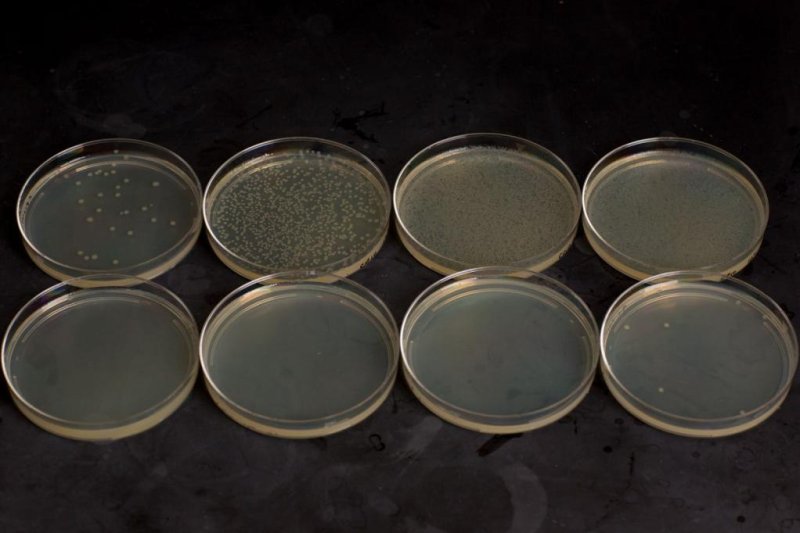Scientists tested their new kill switches using strains of E. coli bacteria. Photo by Wyss Institute at Harvard University
Nov. 16 (UPI) -- Scientists at Harvard have developed a pair of new kill switches that can be used to thwart bioengineered microbes that go rogue.
Researchers have been testing the use of bioengineered microbes for a variety of purposes, from the diagnosis of disease in the human body to the neutering of mosquitoes.
But there remain concerns about releasing manipulated microbes into nature. Could their augmented genes have unintended consequences? Could they morph and proliferate?
Kill-switches ensure the microbes effectively shutdown, or commit suicide, after they've executed their intended function. While kill switches have proven effective in the lab, researchers suggest kill-switch technologies needed to be improved to ensure safety in real-world environs.
"We needed to take our previous work further and develop kill switches that are stable in the long run and would also be useful in real-world applications," Pamela Silver, researcher at the Wyss Institute for Biologically Inspired Engineering at Harvard, said in a news release.
Silver and her colleagues developed two new types of kill switches for added security.
The first is known as the "essentializer," which piggybacks off another type of kill switch known as the "memory element." The memory element uses genes from a bacteria-infecting virus to build an alarm system into the genome of the microbe. The alarm is designed to remember the presence of a specific molecule, a signal that the microbe has ventured too far from its intended target.
When the target is sensed, the bacteriophage genes are triggered and toxins capable of killing the microbe are released. But as microbes evolve, they randomly tweak their genes. Over generations, these tweaks can yield useful adaptations. They can also disrupt the programmed kill-switch.
To account for the problem, researchers installed the essentializer. Scientists spliced the bacteriophage genes into another part of the microbe's genome. These genes are manipulated to ensure small amounts of toxins are produced, while the original memory element is designed to produce small amounts of an anti-toxin, keeping the microbe alive.
Should the original memory element kill-switch become lost, the essentializer would begin producing more toxins, thus killing the microbe.
"To create this sophisticated system of checks and balances, we also made sure that the kill switches themselves remained fully intact, which is an important prerequisite for future applications; we verified that they were still functional after about 140 cell divisions," said grad student Finn Stirling.
Scientists named their second new kill-switch "cryodeath." The switch uses similar toxin/anti-toxin DNA splices. But the switch is synched with temperature, instead of another kill-switch.
In lab tests, scientists showed when the temperature drops from 37 degrees to 22 degrees Celsius, the toxin genes are expressed and the anti-toxin genes are inhibited.
The researchers detailed their new kill switches in a new paper published this week in the journal Molecular Cell.
"This study shows how our teams are leveraging synthetic biology not only to reprogram microbes to create living cellular devices that can carry out useful functions for medicine and environmental remediation, but to do this in a way that is safe for all," said Donald Ingber, founding director of the Wyss Institute.















